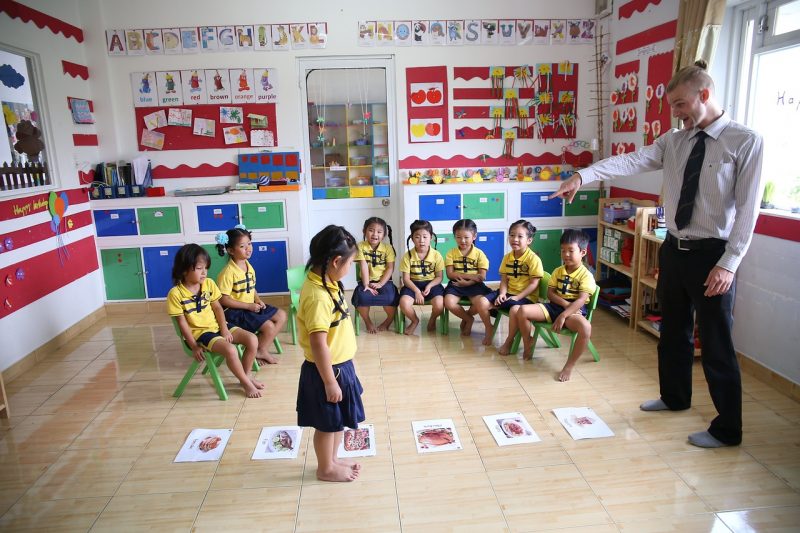I went to a teaching seminar today called Responsive Classroom. It is a teaching method that believes in building a teaching community that helps students understand the importance of self regulation to create a positive, calm and safe classroom environment. This is accomplished through enlisting the cooperation of students rather than using force or punishment to establish control.
 .
.
After attending and internalizing the philosophy, it seems to me that there are a lot of ideas that could apply to parenting as well.
One of the areas spoken about, which I have learned about many times before in different settings, are the four main leadership styles. In truth, every teacher and every parent have their own style of teaching or parenting and that is a good thing. However, of the many many styles of leaders (teachers and parents among them), research tells us that leadership styles pretty much fall into four main leadership categories.
Some of the leadership styles have proven to be more effective than others. It is interesting to identify the characteristics that each of us tend to use, when we are find ourselves in leadership roles. Once we understand the characteristics of our leadership style, we may get some ideas on how to improve by adjusting or tweaking our style. Here is a brief summary of each of them.
The Autocratic Style
The autocratic style is characterized by the many rules created by the teacher or parent, which the student or child must follow. The message is “my way or the highway”. It assumes that without these rules, children would not be capable of regulating themselves. Students and children who comply with this type of leadership style, generally do so out of fear of punishment. Although this style can create an orderly classroom or home environment, it does so through fear and also can cause resentment among the students or children. Although this style may produce desired results in the short term, it may later backfire and cause rebellion.
The Permissive Style
The permissive style falls at the opposite end of the spectrum. In this style there are few limits on behavior, and those that do exist are not enforced with regularity. Teachers and parents who characterize this style, believe that it is important for their students and children to like them. They worry that if they are too strict, they may create a divide between them and their students or children. These parents or teachers may have had a negative experience with an autocratic leader in their lives, and not wish to cause the same pain to others.
However, when rules are not enforced, students and children surprisingly do not feel safe, and are often tense because they are always trying to figure out what is acceptable and what isn’t. Teachers and parents in this category will often loose control and end up pleading with, or bribing their students or children to cooperate. This leads to parents and teachers that will in time become frustrated with parenting or teaching and teachers who may even leave their profession.
The Flip-Flop Style
Many new parents and teachers develop a style that vacillates between autocratic and permissive. The lack of predictable expectations can cause fear and confusion similar to the permissive style, as children do not know what to expect. Teachers and parents will say no to a particular behavior but then flip flop and say “well maybe you can have another chance.” This causes continuous tension and children will continually test to see how far they can go, before the parent or teacher actually puts their foot down.
The parent or teacher that exhibits this style generally has a vision of how they want their home or classroom to run, but don’t have the strategies to create the environment that they envision. Because they have no strategies, they may eventually resort to screaming and harsh punishments or humiliation.
Managing children can be challenging, and even experienced caregivers can become frustrated and overwhelmed. It is important for parents and teachers to develop positive ways to manage children when they lack impulse control or become frustrated and angry.
The Authoritarian Style
The authoritarian style helps student to develop self control and learn to regulate their own behavior.
This style has little to do with punishments and rewards but rather helps children to value their ability to regulate their own behavior. This is accomplished when parents and teachers establish clear expectations and help students become more self aware through pointing out and stopping negative behavior quickly, so that learning can continue in the classroom.
The teacher is firm, kind and consistent and creates a positive and orderly environment. The teacher or parent takes the time to teach children how to live up to these expectations and be contributing members to the classroom or home community.
There are many opportunities in the school and home environment to teach children how to act in a socially responsible way.
As parents develop these skills they create a more positive and engaging environment and children are able to further reach their potential.

Do you identify with any of these styles? Taking the time to visualize our interactions with our students or children can help us to see if we might gain from creating a more authoritative style in our homes or classrooms.
By working to develop a more authoritarian style, we can create a more self aware and less punitive environment that becomes more calm, safe and positive.
The change may not be apparent overnight but as we create, establish, and implement clear and consistent expectations, we may notice that the environment in our home or classroom has slowly changed for the good and that our students and children are more positive, happy and self reliant.
Please share your observations at home and at school, if these ideas have helped you to transition to a more authoritative style.






Leave A Comment